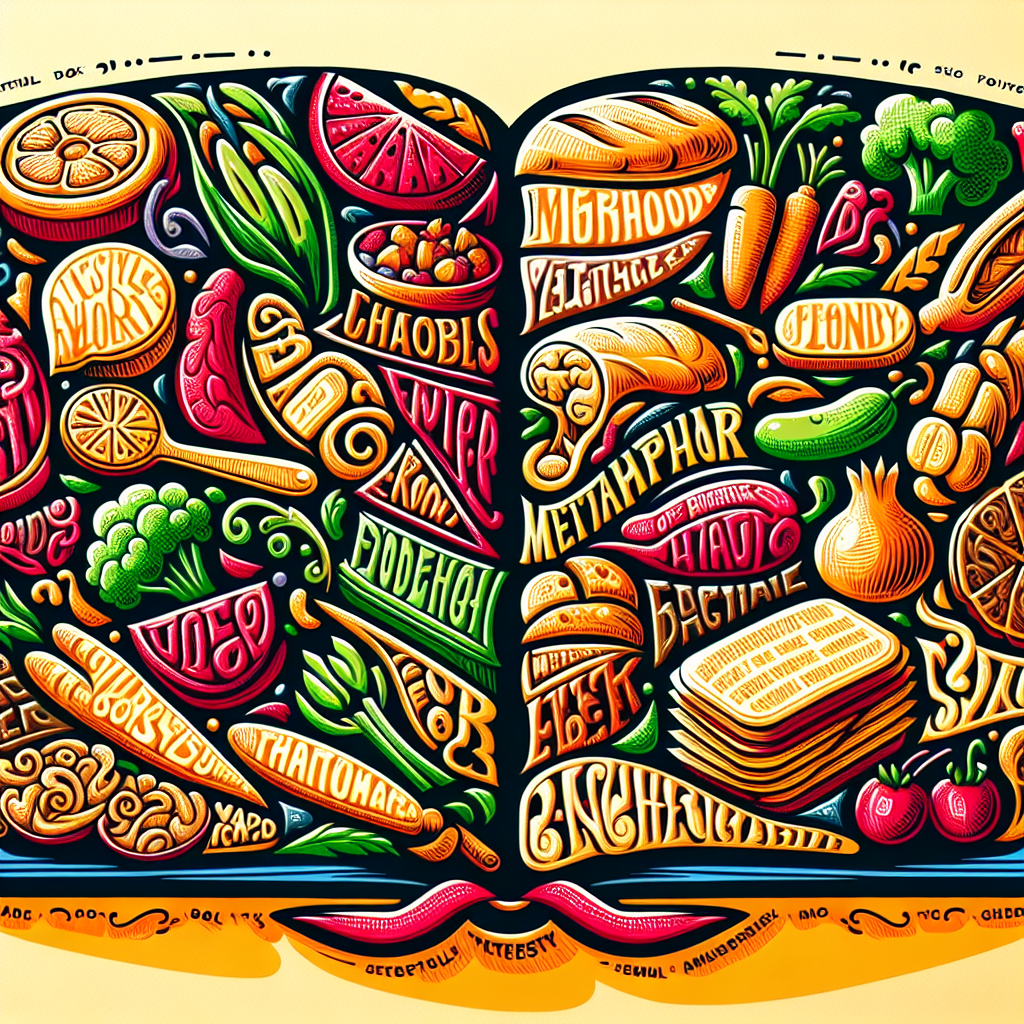[ad_1]
# Edible Metaphors: The Role of Food in Symbolic Language and Imagery
Throughout the history of human civilization, food has served as a fundamental element of culture and daily life, transcending its basic utility as sustenance. Its significance is deeply embedded in language, literature, and art, imbuing our expressions and imaginations. One of the most fascinating aspects of this integration is the use of food as metaphor, enriching our communication with flavorful layers of meaning. This article explores the role of food in symbolic language and imagery, offering a taste of how edible metaphors enhance storytelling, convey complex ideas, and connect us across cultures.
## Digesting the Concept of Edible Metaphors
At its core, a metaphor is a figure of speech in which a word or phrase denoting one kind of object or idea is used in place of another to suggest a likeness or analogy between them. When we delve into edible metaphors, we are referring to the use of food items and culinary processes to represent ideas, emotions, and states of being outside their literal context.
For instance, calling someone “the apple of my eye” refers to someone very dear to the speaker, with no actual apples involved. Or consider the phrase “a half-baked idea,” suggesting something that has not been thought through fully, likened to an undercooked dish. These metaphors enrich our language, adding flavor and depth to our expressions.
## The Flavor of Thought: Edposing Food in Symbolic Language
Food metaphors permeate languages around the globe, illustrating shared human experiences. They reveal not only cultural values and traditions but also commonalities in human psychology. Metaphors like “spilling the beans” (revealing a secret), or being in “a pickle” (a difficult situation), serve as evidence of food’s ubiquitous influence on our conceptual framework.
### Cultural Savories
The use of food in symbolic language also serves to highlight cultural identity and communal memory. In many cultures, specific foods carry significant historical and symbolic weight. For example, in Chinese culture, rice is not just a staple food but also a symbol of life and fertility. Thus, phrases related to rice often carry connotations of prosperity, luck, and abundance.
### Literary Feasts
Literature offers a banquet of examples where food metaphors enrich narratives, providing insights into characters, settings, and themes. Shakespeare was particularly fond of using food metaphors, such as in “Macbeth,” where the act of cooking serves as a metaphor for plotting treason. In modern literature, authors like Laura Esquivel and Isabel Allende have infused their narratives with magical realism, often centering around food, to explore themes of love, tradition, and revolution.
## The Sustenance of Symbolism
In symbolic language, food can represent anything from emotions and relationships to social issues and political ideologies. A common thread in such usage is the idea of nourishment, with food acting as a symbol for what feeds or starves the human spirit or society at large.
### Emotional and Relational Digestion
Edible metaphors often speak to the intricacies of human relationships and emotional states. Phrases like “bitter experiences,” “sweet memories,” or “salty tears” convey feelings using the language of taste, allowing for vivid and relatable imagery. These expressions exemplify how food-related language can articulate the subtleties of human emotions and interpersonal dynamics.
### Sociopolitical Commentary
In a more extensive context, food metaphors can be powerful tools for critiquing social and political systems. For example, the notion of a “melting pot” describes the ideal of an inclusive society blending different cultures harmoniously. Meanwhile, a “salad bowl” suggests a society where diverse cultural identities coexist without losing their distinct flavors. These metaphors leverage the universal experience of preparing and sharing food to discuss complex sociopolitical concepts.
## FAQs on Edible Metaphors
### Q: Why are food metaphors so common in languages worldwide?
A: Food is a universal experience, fundamental to survival and deeply embedded in cultural traditions. This shared importance makes it an accessible and relatable tool for metaphorical expression.
### Q: Can the meaning of a food metaphor change over time or between cultures?
A: Absolutely. The interpretation of metaphors can evolve with societal changes and vary significantly between different cultural contexts due to unique culinary traditions and historical connotations.
### Q: How do food metaphors impact communication?
A: Food metaphors can make communication more vivid, relatable, and engaging. They leverage common experiences and senses (taste, smell, sight) to convey ideas and emotions more effectively.
### Q: Are there any downsides to using food metaphors?
A: While food metaphors enrich language, they can sometimes perpetuate stereotypes or become clichéd if overused. Additionally, their meanings may not translate well across cultures, leading to confusion or misinterpretation.
## Concluding Bites
The role of food in symbolic language and imagery showcases the rich tapestry of human experience, thought, and expression. Edible metaphors offer a universal yet deeply personal medium for conveying complex ideas and emotions, highlighting the interconnectedness of human cultures through the universal language of food. As society and languages evolve, so too will the ways in which we incorporate the essence of food into our shared narratives, continuing to feast on the endless possibilities of edible metaphors.
Through this exploration of edible metaphors, it’s clear that food does much more than nourish the body—it nourishes the mind and soul, providing a shared plate from which we can all draw understanding and connection. Whether sweet or bitter, complex or simple, food metaphors remain a vital ingredient in the recipe of human communication.
[ad_2]

Leave a Reply